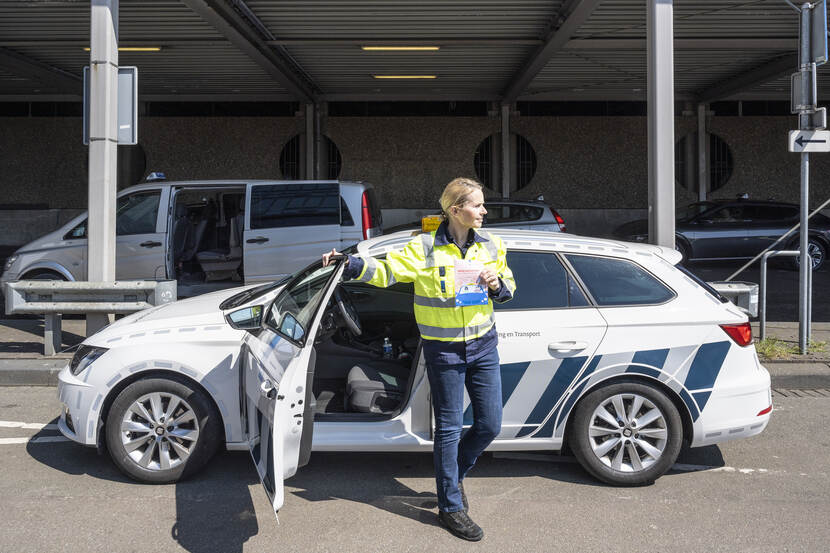The well-meaning driver often breaks rules through ignorance, not because he flouts rules.
The Human Environment and Transport Inspectorate (ILT) checks whether taxi entrepreneurs and drivers comply with the rules for working and rest times. After all, overtired drivers pose a risk to road safety. Violation of these rules can also lead to unfair competition. Taxi drivers often find these rules complicated; many do not know how to apply these correctly in practice. The ILT is therefore starting an information campaign. Alexandra Knipping is a passenger transport inspector. She explains how the ILT tries to improve compliance with targeted information.
Alexandra “During inspections, our inspectors notice that there is a group of drivers who do not fully understand the rules. That is why our inspectors hand out leaflets during road inspections to taxi drivers who do not fully understand the rules, but who are open to learn how to apply them correctly. If you notice a violation during a check, you often notice whether the driver is prepared to enter into a dialogue and to learn from mistakes made. The well-meaning driver often breaks rules through ignorance, not because he flouts rules. We want to offer this well-intentioned group tools. We do this, among other things, with a folder in which we explain the most important rules in a simple manner. That does not mean that we allow drivers who break the rules to continue driving.” According to Alexandra, the weekly rest is especially difficult to understand.
“If you look at the weekly rest, it says 'in every period of 14 days'. That means that the calculation starts again every time, after a completed rest. So the rule does not look at Monday to Sunday. During checks we notice that drivers find this way of 'counting' complicated. In addition, the rules were changed in 2016; even experienced drivers are not all aware of this. We see this struggle with the rules among both new and experienced drivers. Finally, not everyone knows that the rules for employed drivers and self-employed persons are the same. During checks we notice that self-employed people think that the rules for rest periods do not apply to them. But only for salaried drivers. That is a misconception.”
Alexandra Knipping - Road Transport Inspector at the ILT

“As an inspectorate, we do something with the signals that reach us and in this case they were the reason for us to start this campaign. We receive signals through conversations during inspections with taxi drivers and entrepreneurs. You often hear that drivers would like to comply with the rules, but find it difficult. That is why we now try to explain these rules as simply as possible. The folder contains a QR code, which refers to information on our website. In addition, we immediately take the opportunity to draw the attention of the driver and the entrepreneur to other rules. For example, the correct use of the On-board Computer Taxi (BCT).”
According to Alexandra, the brochure will remind many a seasoned taxi driver of the so-called taxi booklet. “That was a booklet that we handed out on the street years ago about the rules that then applied to working and rest times. Some drivers are still talking about that. Glad we have something like this again. Nice to also show the other side of our profession; that we not only enforce, but also inform. †
“As an inspectorate, we are not there to play the bogeyman and hand out fines. Our job is to check the rules and our goal is safe and fair taxi transport. We accurately record who we have informed during this campaign. Later in the year we will see whether this group complies better with the rules.” According to Alexandra, there will also be a Taxi assistance service on the road in the future website of the ILT. “This will be a tool with which the driver and the entrepreneur can get answers to frequently asked questions via a kind of step-by-step plan. With these efforts, as an inspector, I hope to see a clear improvement in compliance and road safety.”
Photo rights: Human Environment and Transport Inspectorate – more ILT stories


